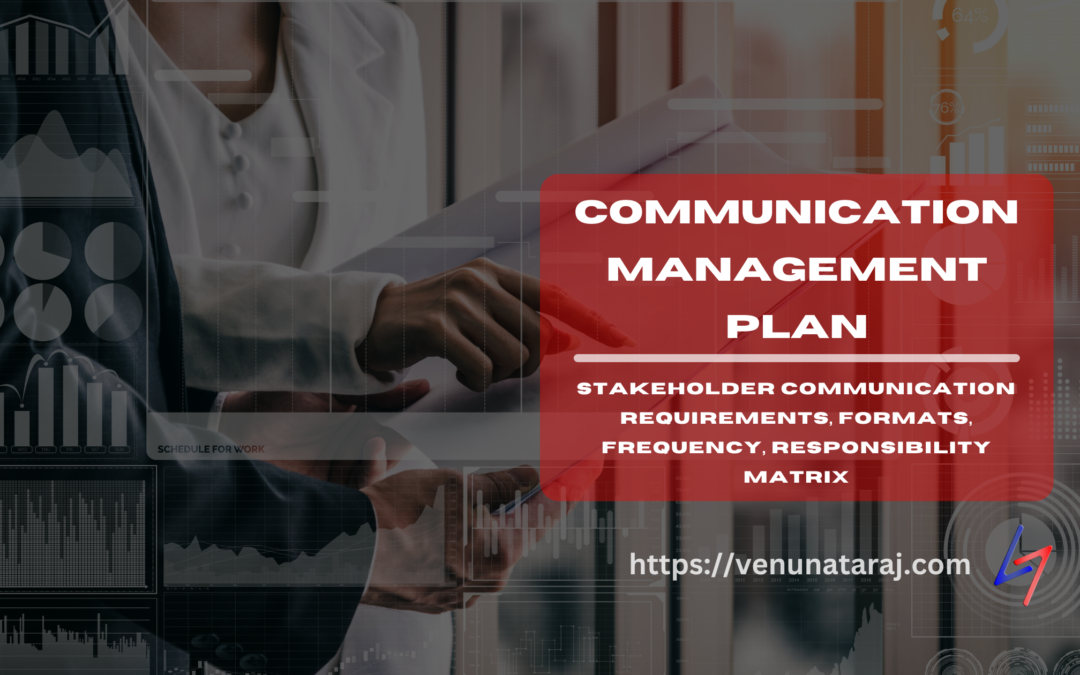Table of Contents
Mastering Project Communication: Essential Elements of a Communication Management Plan
Effective communication is the backbone of successful project management. A well-structured Communication Management Plan ensures that information flows smoothly among all project stakeholders. In this article, we’ll explore the key elements that make up a robust Communication Management Plan, focusing on stakeholder communication requirements, formats, frequency, and the responsibility matrix.
Understanding the Communication Management Plan
Before we dive into the key elements, let’s briefly define what a Communication Management Plan is. It’s a crucial component of project management that outlines how project information will be created, shared, and managed throughout the project lifecycle. This plan serves as a roadmap for all project-related communications, helping to minimize misunderstandings and keep everyone informed and aligned.
Key Elements of a Communication Management Plan
1. Stakeholder Communication Requirements
The foundation of any effective Communication Management Plan is a clear understanding of stakeholder communication needs. This element involves:
- Identifying Stakeholders: Create a comprehensive list of all individuals, groups, or organizations that have a vested interest in the project.
- Analyzing Communication Needs: Assess what information each stakeholder requires, how often they need it, and in what format they prefer to receive it.
- Prioritizing Stakeholders: Determine the level of influence and interest each stakeholder has in the project to tailor communication strategies accordingly.
By thoroughly addressing stakeholder communication requirements, you ensure that everyone receives the information they need to support the project’s success.
2. Communication Formats
Different stakeholders may prefer different ways of receiving information. The Communication Management Plan should outline various formats to be used, such as:
- Written Reports: Detailed documents providing in-depth project information and updates.
- Presentations: Visual and verbal summaries of project progress, often used for executive stakeholders.
- Emails: Quick updates and day-to-day communications.
- Meetings: Face-to-face or virtual gatherings for discussions and decision-making.
- Dashboards: Real-time visual representations of project metrics and KPIs.
Specifying these formats helps ensure that information is delivered in the most effective and accessible way for each stakeholder group.
3. Communication Frequency
Determining how often different types of communication should occur is crucial for maintaining engagement without overwhelming stakeholders. The plan should address:
- Regular Updates: Establish a schedule for routine project status reports.
- Milestone Communications: Plan for special communications when significant project milestones are reached.
- Ad-hoc Communications: Set guidelines for unexpected issues or changes that require immediate attention.
By clearly defining communication frequency, you create expectations and ensure a steady flow of information throughout the project lifecycle.
4. Responsibility Matrix
A well-defined responsibility matrix is essential for clarifying who is responsible for various communication tasks. This matrix should include:
- Roles and Responsibilities: Clearly define who is responsible for creating, reviewing, approving, and distributing different types of communications.
- RACI Chart: Use a Responsible, Accountable, Consulted, and Informed (RACI) chart to map out communication responsibilities for each stakeholder.
- Escalation Procedures: Outline the process for escalating issues or decisions when necessary.
The responsibility matrix ensures that there’s no ambiguity about who handles what in the communication process, reducing the risk of important information falling through the cracks.
Putting It All Together
When creating your Communication Management Plan, it’s important to consider how these key elements work together. Here’s an example of how you might structure this information:
| Stakeholder | Communication Requirement | Format | Frequency | Responsible Party |
|---|---|---|---|---|
| Executive Sponsor | High-level project status | Presentation | Monthly | Project Manager |
| Team Members | Detailed task updates | Weekly | Team Leads | |
| Clients | Progress reports | Written report | Bi-weekly | Account Manager |
This table provides a clear overview of how communication will be managed for different stakeholders, incorporating all the key elements we’ve discussed.
Benefits of a Well-Structured Communication Management Plan
By carefully addressing these key elements in your Communication Management Plan, you can expect to see several benefits:
- Improved Stakeholder Engagement: When stakeholders receive the right information at the right time, they’re more likely to stay engaged and supportive of the project.
- Reduced Misunderstandings: Clear communication channels and expectations minimize the risk of miscommunication and conflicts.
- Increased Efficiency: With defined roles and processes, team members can focus on their tasks without confusion about communication responsibilities.
- Better Decision-Making: Regular, well-structured communication ensures that decision-makers have the information they need when they need it.
- Enhanced Project Control: By maintaining open lines of communication, project managers can more easily monitor progress and address issues promptly.
Conclusion
A comprehensive Communication Management Plan is a powerful tool in any project manager’s toolkit. By focusing on stakeholder communication requirements, formats, frequency, and a clear responsibility matrix, you create a solid foundation for project success. Remember, effective communication is not just about disseminating information—it’s about fostering understanding, collaboration, and alignment among all project stakeholders.
As you develop your Communication Management Plan, keep these key elements in mind and tailor them to your specific project and organizational needs. With a well-executed plan, you’ll be well on your way to smoother project execution and stronger stakeholder relationships.

